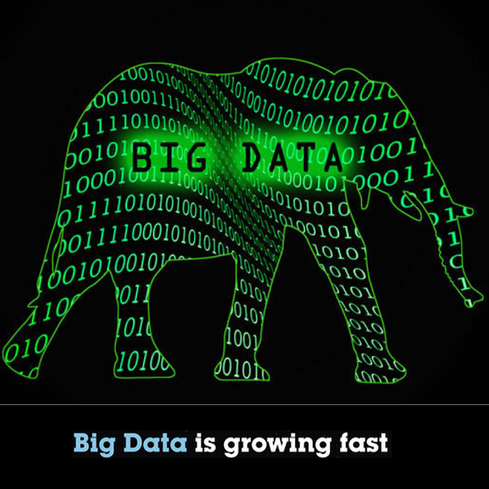Gartner: Rising Enterprise Software Spending Won't Lift ITGartner: Rising Enterprise Software Spending Won't Lift IT
CRM and ERP spending will rise through 2015, but the switch to cloud and hosting means data center spending won't keep pace.


10 Powerful Facts About Big Data
10 Powerful Facts About Big Data (Click image for larger view and slideshow.)
Enterprise software used to be an engine of growth for the entire IT market, but with the move to cloud computing and hosting, those days are gone. That's one of the key findings of a just-released IT spending forecast from Gartner.
Gartner's Worldwide IT Spending Forecast, released in late June, has spending on pace to total $3.7 trillion in 2014 and $3.8 trillion in 2015 -- 2.1% and 3.8% increases, respectively. Enterprise software is leading all categories, with 6.9% and 7.3% spending increases forecast for 2014 and 2015, but with little trickle-down value for other categories, such as data center systems or telecom services (see chart below).
[Want more from Gartner? Read Gartner's Magic Quadrant 2014 For Cloud: Winners & Losers.]
"It used to be that, if you saw growth in enterprise software, you'd see corresponding growth in all of the other categories, but on-premises deployments are slowly going away or headed toward an equilibrium point," John Lovelock, a Gartner research vice president, told information in a phone interview.
Where multi-tenant services used to be viewed as "true cloud" and hosting or single-tenant a form of cloud washing, many enterprises are now choosing hosting as their preferred route away from on-premises deployments, Lovelock said.

"Hosting gives organizations more control over version changes than multi-tenancy, and there's also more customization possible in a hosted offering that's not [availabble] in the cloud," he said. "Security is also raised in industries where they prefer to know where their data and servers are located."
CRM is among the hottest categories in enterprise software, and Gartner is seeing cloud-based CRM as a disruptive force, beating on-premises options in competitive deals, replacing on-premises CRM deployments earlier than usual, and even winning in deals where companies weren't even looking for CRM.
"There's a desire to reach out proactively with web, social media, mobile, and other [cloud] pieces that make it easier to interact with clients," Lovelock said. "There's a perceived value in the marketing functionality, e-commerce solutions, and some of the customer-service support applications."
This description matches Salesforce.com's success in pitching the Salesforce1 platform (formerly Force.com) as a route to mobile, social, and cloud enablement, both for enterprises and ISV partners, even if the apps aren't about classic CRM.
ERP is another hot ticket in enterprise software, with core financials spending expected to grow 7% in 2015, but organizations are in search of "post-modern ERP," according to Lovelock.
"In a big data world, as we move toward digital businesses, the current crop of ERP products are stifling innovation," he said. "What's required is a much more agile ERP requiring less customization and more support for standards that allow for integration of modules and a quicker reaction to the market environment."
Here, cloud and hosted ERP options such as Kenandy, Microsoft Dynamics GP and Nav, NetSuite, Oracle Fusion, Plex, and Workday come to mind. SAP and Infor, meanwhile, are highlighting hosting options and modern, mobilized interfaces (Fiori in SAP's case and SoHo in Infor's case).
Of course, demand for hosted and multi-tenant enterprise applications also sparks demand for more servers and storage, but this aspect of these services falls into the IT Services category, rather than Data Center Systems. IT Services is the second strongest category in Gartner's spending forecast, but Lovelock said services related to the cloud represent "a trivial amount" of the total IT Services category.
IT Services splits into product support, for both hardware and software, and business services, which includes consulting, implementation, IT outsourcing, and business process outsourcing. Though on-premises deployments may not be driving growth, Lovelock said the cloud remains a comparatively small (though fast-growing) pocket of the total market.
"In 2015, IT Services will total $1 trillion, and the cloud portion will be $17 billion," he said. "Yes, cloud is important and interesting, but it's never going to surpass even half of either the hardware-support market or the software-support market."
IT leaders who don't embrace public cloud concepts will find their business partners looking elsewhere for computing capabilities. Get the new Frictionless IT issue of information Tech Digest today (registration required).
About the Author
You May Also Like






